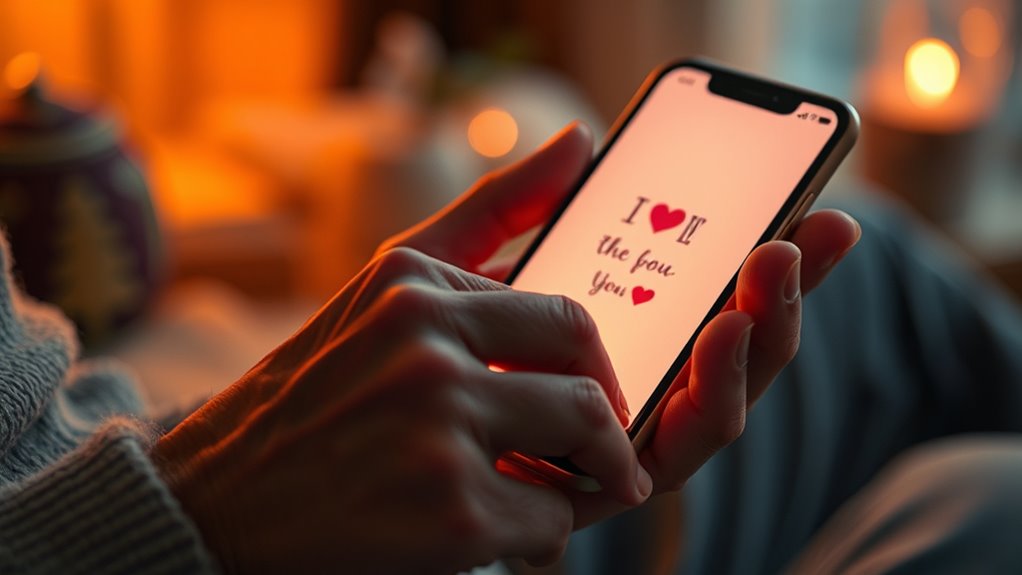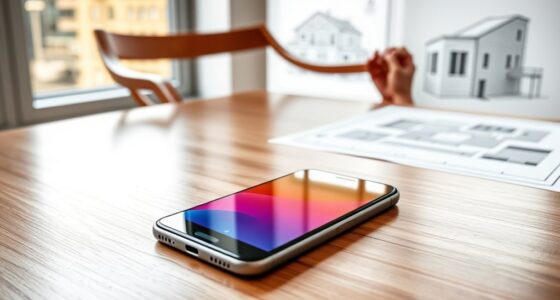Emotional design is about creating products that connect with your feelings, making experiences memorable and engaging. By using appealing visuals, colors, and thoughtful cues, you feel more trust, excitement, or calmness. Good emotional design adapts to your needs and personal preferences, turning routine tasks into meaningful moments. When a product genuinely resonates with you, it builds loyalty and trust. If you want to discover how to craft these meaningful connections, there’s more to explore below.
Key Takeaways
- Emotional design creates products that evoke positive feelings, fostering meaningful user connections beyond mere functionality.
- Visual elements like colors, typography, and layout influence immediate emotional responses and perceptions.
- Cohesive visuals and subtle animations enhance trust, satisfaction, and emotional comfort during user interactions.
- Personalization and positive reinforcement adapt experiences to user needs, strengthening emotional bonds.
- Prioritizing emotional cues transforms functional products into engaging, memorable experiences that build long-term loyalty.

Emotional design focuses on creating products that evoke positive feelings and foster meaningful connections with users. When you consider emotional design, you’re aiming to craft experiences that go beyond functionality, tapping into the emotional responses that influence how you feel about a product. This approach recognizes that user experience isn’t just about ease of use or efficiency; it’s also about how a product makes you feel at every touchpoint. By prioritizing emotional engagement, designers can create products that resonate deeply, encouraging loyalty and personal attachment.
One of the key aspects of emotional design is enhancing visual appeal. When you first encounter a well-designed product, the visual elements—colors, shapes, typography, and overall layout—immediately influence your perception. A visually appealing interface can evoke feelings of trust, excitement, or comfort, setting the tone for a positive interaction. For example, vibrant colors might evoke energy and enthusiasm, while soft tones can create a sense of calm. When you find a design visually aligned with your preferences, it makes your experience more enjoyable and memorable. The aesthetic appeal draws you in, encourages exploration, and builds an emotional connection from the outset.
Beyond just looking good, emotional design involves understanding how visual cues guide your behavior and feelings. Subtle animations, thoughtful iconography, and consistent branding all contribute to creating a cohesive visual language that feels familiar and reassuring. When you use a product with a polished visual appeal, it communicates care and attention to detail, which enhances your overall user experience. You feel confident traversing the interface because every element seems intentional and harmonious, reducing frustration and increasing satisfaction.
Moreover, emotional design isn’t static; it evolves based on your feedback and changing needs. When a product anticipates your emotional responses—like providing positive reinforcement through notifications or offering personalized content—it strengthens your connection. You’re more likely to keep using a product that makes you feel understood and valued. This emotional rapport encourages ongoing engagement and transforms routine interactions into meaningful experiences.
In addition, understanding the role of aesthetic appeal can help designers craft more emotionally resonant experiences that align with users’ preferences and cultural contexts. When a product anticipates your emotional responses—like providing positive reinforcement through notifications or offering personalized content—it strengthens your connection. You’re more likely to keep using a product that makes you feel understood and valued. This emotional rapport encourages ongoing engagement and transforms routine interactions into meaningful experiences.
In essence, emotional design is about more than just making things look attractive. It’s about creating a holistic user experience where visual appeal plays a central role in shaping your feelings and perceptions. When done well, it turns functional products into emotionally engaging tools that inspire loyalty, evoke delight, and foster genuine connections. By focusing on these emotional cues, designers can craft products that not only serve your needs but also make you feel good every time you use them.
Frequently Asked Questions
How Does Emotional Design Influence User Loyalty?
Emotional design boosts your user loyalty by strengthening brand connection through emotional branding. When your design appeals to users’ feelings, they form a deeper bond with your brand, making them more likely to stay loyal. By creating positive, memorable experiences, you foster trust and attachment, encouraging repeat engagement. This emotional connection turns casual users into dedicated customers, ensuring long-term loyalty and advocacy for your brand.
Can Emotional Design Improve Product Usability?
Ever wondered if emotional design can boost usability? It absolutely can. By enhancing aesthetic appeal and fostering user engagement, emotional design makes products more intuitive and enjoyable to use. When users feel connected and satisfied, they navigate more confidently and efficiently. So, yes, emotional design not only appeals to feelings but also improves overall usability, creating a seamless experience that encourages continued interaction and loyalty.
What Role Does Color Psychology Play in Emotional Design?
Color psychology plays a vital role in emotional design by leveraging color symbolism to evoke specific feelings and moods. When you choose colors thoughtfully, you can enhance users’ mood and create a more engaging experience. For example, warm tones can foster excitement, while cool shades promote calmness. By understanding how colors influence emotions, you can craft designs that resonate deeply and make users feel more connected to your product.
How Do Cultural Differences Impact Emotional Design Preferences?
You can’t judge a book by its cover when it comes to cultural differences shaping emotional design preferences. Cross-cultural empathy helps you understand diverse emotional expressions and adapt designs accordingly. Cultural backgrounds influence color meanings, symbols, and aesthetics, making what feels appealing in one culture seem off in another. To truly connect, you must listen and learn, ensuring your designs resonate emotionally across borders rather than falling flat.
Are There Ethical Concerns in Designing Emotionally Appealing Products?
You should be aware that designing emotionally appealing products can raise ethical concerns like emotional manipulation, which may influence user behavior unfairly. It’s vital to prioritize user consent, ensuring users are aware of how their emotions are being engaged. By being transparent and respectful, you can create compelling designs without crossing ethical boundaries, fostering trust and maintaining integrity while still connecting emotionally with users.
Conclusion
By embracing emotional design, you actively attract users’ affections and foster faithful feelings. When you craft mesmerizing, caring, and compelling experiences, you create connections that stick. Remember, designing with depth and delight doesn’t just draw users in—it deepens their devotion. So, stir their senses, spark their sentiments, and shape a stunning, satisfying experience. Ultimately, emotional design isn’t just about aesthetics; it’s about inspiring intimacy, influence, and inspiring ongoing allegiance.









